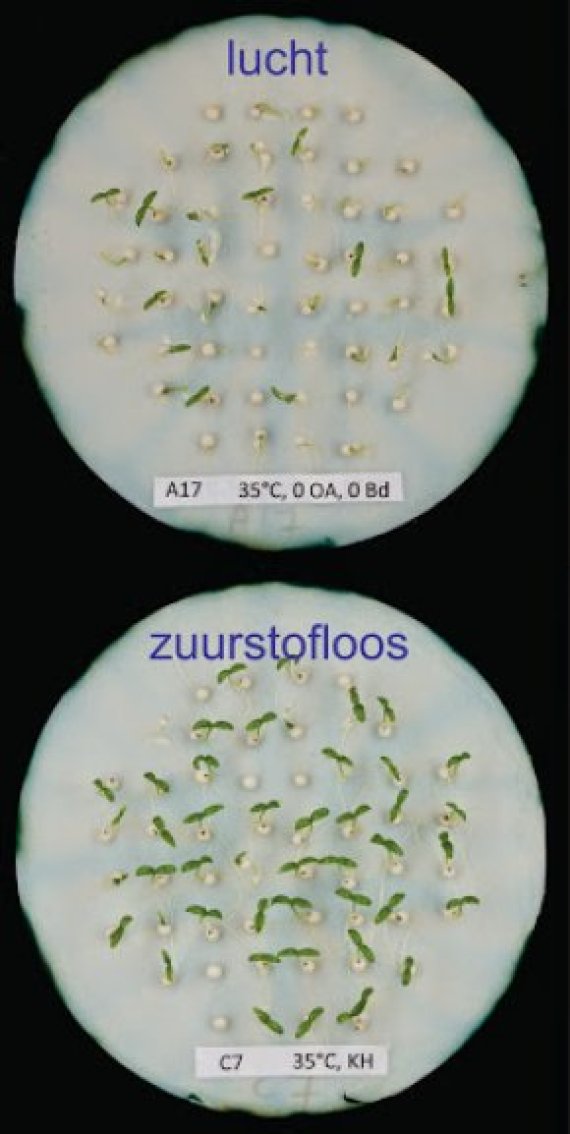Until now little attention has been paid to the role of oxygen. Wrongly, says Groot. All sorts of oxidation reactions take place in the seed which affect its shelf life.
Groot and his colleagues demonstrated this by submitting celery seeds to different conditions, with and without oxygen uptake (picture: lucht and zuurstofloos), and comparing them with the conventional cold storage. The results are unambiguous. Storage without oxygen works as well as cold storage with oxygen, even in tropical temperatures. In both cases, dry conditions are required. The germination potential of the seeds remained practically unaffected under these conditions. This is important news for seed companies and gene banks where long-term storage of seeds is important.
‘The most important thing is dry storage,’ says Groot. ‘After that comes oxygen-free packaging. And if it is possible, after that I would advise cold storage.’ This is especially good news for developing countries, where cooling to -20 degrees Celsius is not an option. Oxygen-free storage, on the other hand, is relatively simple and cheap: vacuum-packing or adding a packet of iron powder suffice for extracting the oxygen. These are common procedures in the food industry.
The FAO standard guidelines currently only point out the importance of low temperatures and humidity.
Steven Groot
Fellow-researcher Rob van Treuren of the Dutch Centre for Genetic Sources (CGN) adds a crucial message to this. ‘Do store the seeds without oxygen as soon as possible after harvesting. Now, months often go by between harvesting and storage, and oxygen gets to work during that period. Antioxidants in the seed can prevent some of the damage, but the supply of these is finite, adds Groot. And the fewer the antioxidants, the shorter the shelf life of the seeds.
These new insights may lead to changes to the guidelines for storage in gene banks. Groot: ‘The FAO standard guidelines currently only point out the importance of low temperatures and humidity. There is nothing in them about vacuum packing and oxygen levels.’ For the CGN, the new insights have limited practical implications. There, seeds were already stored dry, vacuum-packed and cold. But the CGN has shortened the period after harvest when the seeds are exposed to oxygen.’

